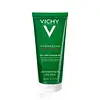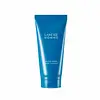What's inside
What's inside
 Key Ingredients
Key Ingredients

 Benefits
Benefits

 Concerns
Concerns

 Ingredients Side-by-side
Ingredients Side-by-side

Salicylic Acid 0.5%
MaskingWater
Skin ConditioningCoco-Betaine
CleansingPropanediol
SolventPEG-120 Methyl Glucose Dioleate
EmulsifyingSodium Chloride
MaskingSodium Cocoyl Glycinate
CleansingDipropylene Glycol
HumectantZinc Gluconate
Skin ConditioningBifida Ferment Lysate
Skin ConditioningSodium Hydroxide
BufferingSodium Benzoate
MaskingPhenoxyethanol
PreservativeCopper Gluconate
Skin ConditioningCaprylyl Glycol
EmollientTetrasodium Glutamate Diacetate
Parfum
MaskingSalicylic Acid 0.5%, Water, Coco-Betaine, Propanediol, PEG-120 Methyl Glucose Dioleate, Sodium Chloride, Sodium Cocoyl Glycinate, Dipropylene Glycol, Zinc Gluconate, Bifida Ferment Lysate, Sodium Hydroxide, Sodium Benzoate, Phenoxyethanol, Copper Gluconate, Caprylyl Glycol, Tetrasodium Glutamate Diacetate, Parfum
Water
Skin ConditioningGlycerin
HumectantStearic Acid
CleansingMyristic Acid
CleansingButylene Glycol
HumectantPEG-32
HumectantPotassium Hydroxide
BufferingLauric Acid
CleansingLauryl Glucoside
CleansingGlyceryl Stearate
EmollientPEG-100 Stearate
Parfum
MaskingMangifera Indica Seed Butter
Skin ConditioningHelianthus Annuus Seed Oil
EmollientPEG-14m
Emulsion StabilisingOlive Oil PEG-8 Esters
EmollientSea Water
HumectantDisodium EDTA
Allantoin
Skin ConditioningSodium Methyl Cocoyl Taurate
CleansingPotassium Cocoyl Glycinate
Magnesium Aspartate
Skin ConditioningZinc Gluconate
Skin ConditioningBiosaccharide Gum-1
HumectantCalcium Gluconate
HumectantCopper Gluconate
Skin ConditioningWater, Glycerin, Stearic Acid, Myristic Acid, Butylene Glycol, PEG-32, Potassium Hydroxide, Lauric Acid, Lauryl Glucoside, Glyceryl Stearate, PEG-100 Stearate, Parfum, Mangifera Indica Seed Butter, Helianthus Annuus Seed Oil, PEG-14m, Olive Oil PEG-8 Esters, Sea Water, Disodium EDTA, Allantoin, Sodium Methyl Cocoyl Taurate, Potassium Cocoyl Glycinate, Magnesium Aspartate, Zinc Gluconate, Biosaccharide Gum-1, Calcium Gluconate, Copper Gluconate
 Reviews
Reviews

Ingredients Explained
These ingredients are found in both products.
Ingredients higher up in an ingredient list are typically present in a larger amount.
This ingredient is a copper salt known for its wound healing properties.
Our bodies use copper to help stabilize our skin's collagen and elastin. Its also an essential for superoxide dismutase, an enzyme with strong antioxidant properties.
Copper has wound healing properties due to its role in creating new blood vessels and tissue repair.
Learn more about Copper GluconateParfum is a catch-all term for an ingredient or more that is used to give a scent to products.
Also called "fragrance", this ingredient can be a blend of hundreds of chemicals or plant oils. This means every product with "fragrance" or "parfum" in the ingredients list is a different mixture.
For instance, Habanolide is a proprietary trade name for a specific aroma chemical. When used as a fragrance ingredient in cosmetics, most aroma chemicals fall under the broad labeling category of “FRAGRANCE” or “PARFUM” according to EU and US regulations.
The term 'parfum' or 'fragrance' is not regulated in many countries. In many cases, it is up to the brand to define this term.
For instance, many brands choose to label themselves as "fragrance-free" because they are not using synthetic fragrances. However, their products may still contain ingredients such as essential oils that are considered a fragrance by INCI standards.
One example is Calendula flower extract. Calendula is an essential oil that still imparts a scent or 'fragrance'.
Depending on the blend, the ingredients in the mixture can cause allergies and sensitivities on the skin. Some ingredients that are known EU allergens include linalool and citronellol.
Parfum can also be used to mask or cover an unpleasant scent.
The bottom line is: not all fragrances/parfum/ingredients are created equally. If you are worried about fragrances, we recommend taking a closer look at an ingredient. And of course, we always recommend speaking with a professional.
Learn more about ParfumWater. It's the most common cosmetic ingredient of all. You'll usually see it at the top of ingredient lists, meaning that it makes up the largest part of the product.
So why is it so popular? Water most often acts as a solvent - this means that it helps dissolve other ingredients into the formulation.
You'll also recognize water as that liquid we all need to stay alive. If you see this, drink a glass of water. Stay hydrated!
Learn more about WaterZinc gluconate has antibacterial and wound healing properties. It is particularly effective against fighting inflammatory acne.
This ingredient is the zinc salt of the PHA gluconic acid. PHAs are gentle cousins to AHAs.